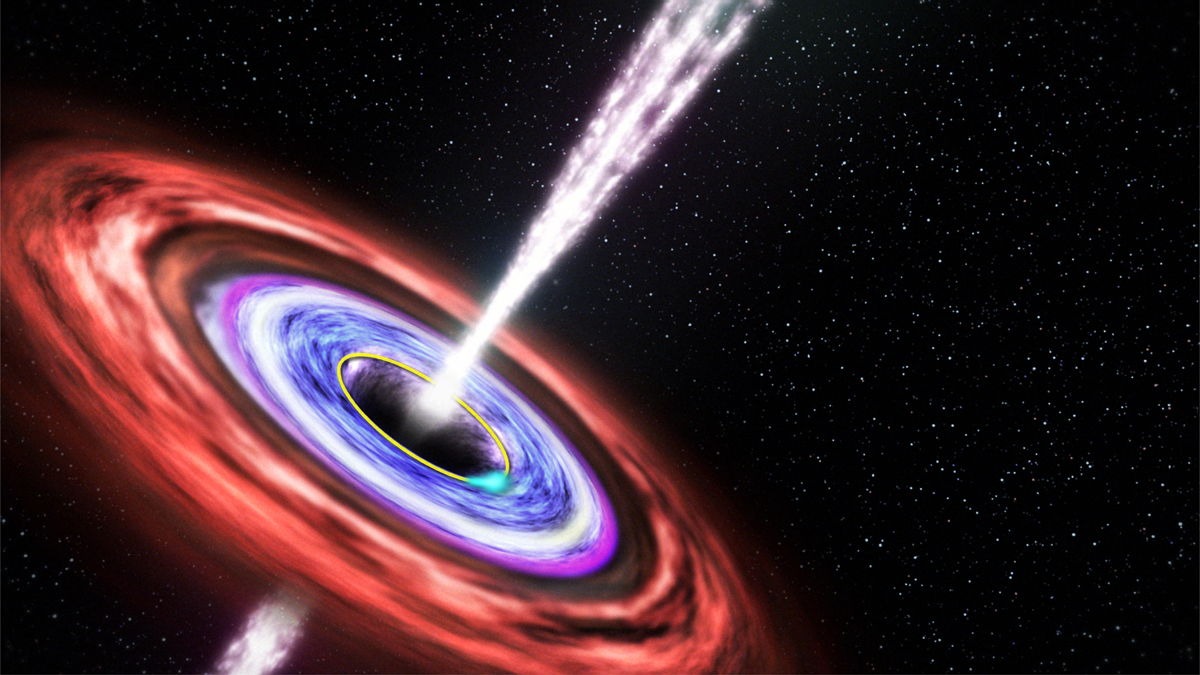
Black holes may not be so simple after all.
According to a leading idea known as the "no hair" or "black hole uniqueness" theorem, black holes can be fully characterized using just three data points — their mass, spin and electric charge. There's no other observable information to be had about these light-gobbling behemoths, which therefore seem to be sleekly and uniquely "bald."
But a new study casts doubt on the no-hair idea, or at least its universal application: Computer simulations suggest that "extreme" black holes — the ones whose spin or electrical charge is fully maxed out — do sport a few wispy hairs here and there.
Related: 10 huge black hole findings of 2020
Space.com Collection: $26.99 at Magazines Direct
Get ready to explore the wonders of our incredible universe! The "Space.com Collection" is packed with amazing astronomy, incredible discoveries and the latest missions from space agencies around the world. From distant galaxies to the planets, moons and asteroids of our own solar system, you’ll discover a wealth of facts about the cosmos, and learn about the new technologies, telescopes and rockets in development that will reveal even more of its secrets.
"This new result is surprising, because the black hole uniqueness theorems are well established, [as is] their extension to extreme black holes," lead author Lior Burko, of Theiss Research in La Jolla, California, said in a statement. "There has to be an assumption of the theorems that are not satisfied to explain how the theorems do not apply in this case."
The inferred black-hole hairs manifest as "a quantity that can be constructed from the space-time curvature at the black hole horizon that is conserved, and measurable by a distant observer," according to the statement. This quantity depends on details of the black hole's formation, so it goes beyond the bare-bones trio of mass, spin and charge.
Excitingly, such hairs may not remain purely theoretical forever. Scientists might be able to spot them using gravitational-wave detectors such as the Laser Interferometer Gravitational-Wave Observatory, according to the new study, which was published online Tuesday (Jan. 26) in the journal Physical Review D.
Get the Space.com Newsletter
Breaking space news, the latest updates on rocket launches, skywatching events and more!
Mike Wall is the author of "Out There" (Grand Central Publishing, 2018; illustrated by Karl Tate), a book about the search for alien life. Follow him on Twitter @michaeldwall. Follow us on Twitter @Spacedotcom or Facebook.
Join our Space Forums to keep talking space on the latest missions, night sky and more! And if you have a news tip, correction or comment, let us know at: community@space.com.

Michael Wall is a Senior Space Writer with Space.com and joined the team in 2010. He primarily covers exoplanets, spaceflight and military space, but has been known to dabble in the space art beat. His book about the search for alien life, "Out There," was published on Nov. 13, 2018. Before becoming a science writer, Michael worked as a herpetologist and wildlife biologist. He has a Ph.D. in evolutionary biology from the University of Sydney, Australia, a bachelor's degree from the University of Arizona, and a graduate certificate in science writing from the University of California, Santa Cruz. To find out what his latest project is, you can follow Michael on Twitter.










